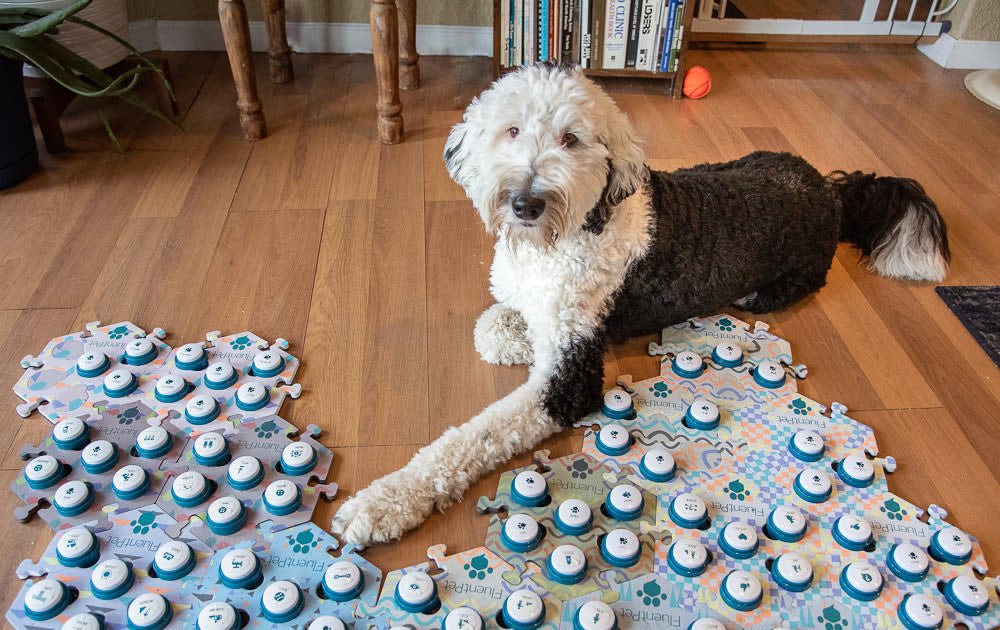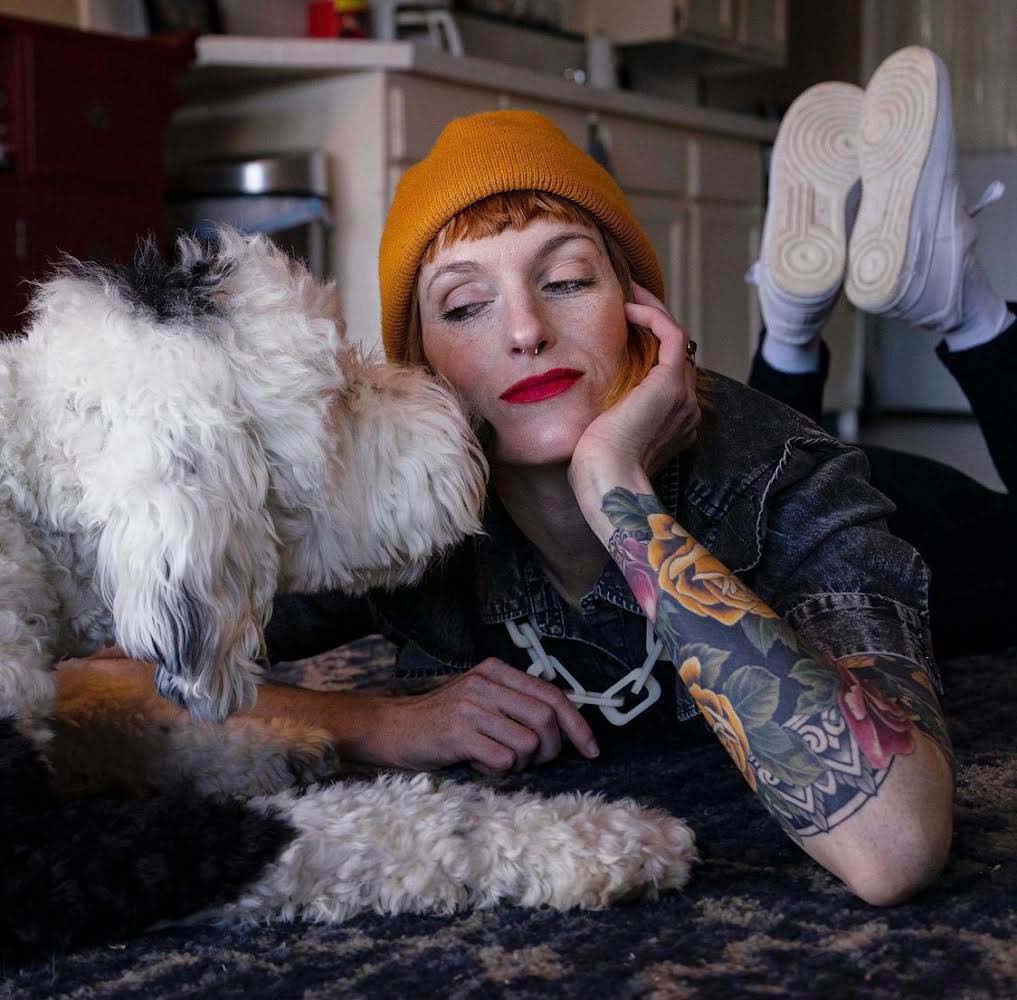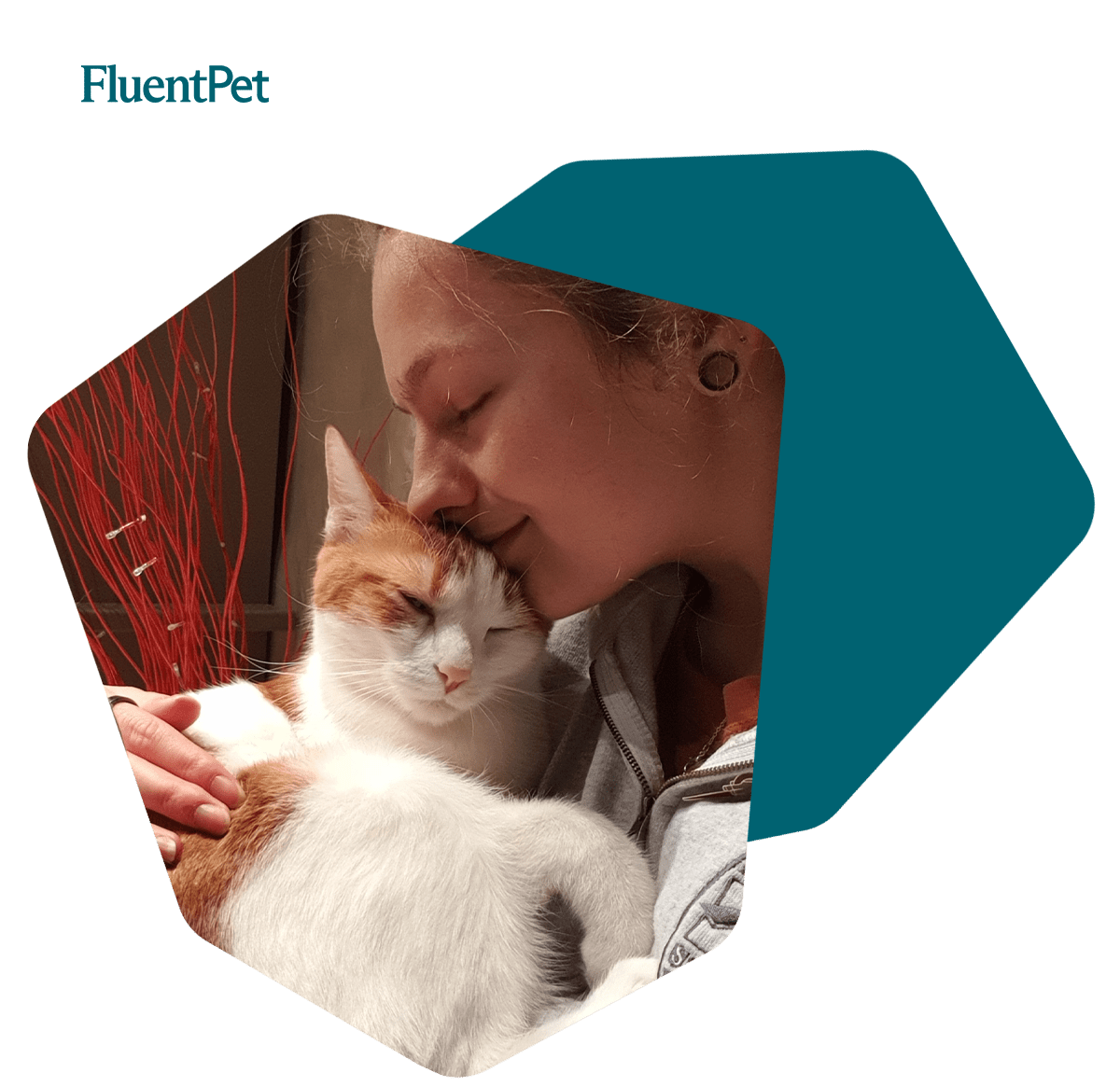Who is Bunny the talking dog?
Born in 2019, Bunny, or @whataboutbunny on TikTok and Instagram, is a sheepadoodle from Tacoma, Washington, who’s gone viral more than once for her talking dog button videos. You may have seen her express her displeasure with bathtime, love for scritches, and many “existential” questions. What is a dog? What is a human? Bunny wants to know too!
How is Bunny able to communicate?
Bunny uses a soundboard, an augmentative and interspecies communication (AIC) device, which allows her to activate buttons that “speak” when pressed. Bunny relies on muscle memory to hit the right buttons––much like how we have memorized the keys on our computer keyboard––to get her point across.
How did Bunny learn to speak?
Alexis Devine, Bunny’s human, has always been fascinated by canine cognition and communication. Inspired by Christina Hunger, a speech-language pathologist who founded the talking dog movement, Alexis also began to teach Bunny how to communicate through a programmable soundboard. Similar Augmentative and Alternative Communication (AAC) devices are also used to assist people with speech or language impediments.
When Bunny was only eight weeks old, Alexis started modeling the word “outside.” Every time they went out the door, Alexis pressed the “outside” button and repeated the word aloud for Bunny. Eventually, the connection was made: the “outside” button meant access to the great outdoors. The frequency of Alexis’ modeling helped Bunny master the “outside” button and understand its contextual use. By 2020, Bunny was stringing together multi-word phrases.
Later that year, Alexis met with cognitive scientist and FluentPet founder Leo Trottier to explore an improved button system. One major modification was the transformation from a traditional cartesian board to the innovative HexTile shape. The hexagonal tiles and smaller buttons made the soundboard more accessible to animals of all sizes—it was much now easier for smaller dogs and cats to activate the buttons.
There may have been a lot of “play,” “outside,” and “poop” in Bunny’s repertoire, but the ability to use buttons has contributed significantly to Bunny’s quality of life, including her health. In this viral video, Bunny sought help from Alexis by pressing the buttons “ouch,” “stranger,” and “paw.” There’s a brief back-and-forth as Alexis tries to figure out “Where ouch?” before Bunny extends her paw, revealing the painful foxtail thorn between her toes.
It’s moments like these that showcase the trust between Bunny and Alexis. The buttons serve as a tool to better understand one another, and their bond has deepened exponentially as they work together in new ways.
You can find a guide to getting started with talking buttons here.
Have there been other animals out there like Bunny?
Yes—researchers in the 1970s were already examining how chimps, apes, and dolphins could select learned buttons to request, comment, or participate in cognitive studies.
One of the most well-known cases of interspecies communication featured Kanzi the bonobo and his sister Panbanisha. Raised by scientist and psychologist Sue Savage-Rumbaugh, Kanzi was taught to communicate through lexigram keyboards.
These lexigram keyboards were boards with symbols on them that each represented individual words. Kanzi would point or gesture towards the symbols to put together simple requests or sentences such as “chase” or “hide” when he wanted to play. Over time, Kanzi could make novel requests and identify correct lexigrams after hearing its corresponding word. Sound familiar? While Bunny’s soundboard is easier for us to use today, previous iterations of similar systems appeared more like Kanzi’s.
Can Bunny really talk?
What does it mean to “talk?” Can we compare Bunny’s ability to communicate to that of humans? Is she using language?
In the past, well-known behaviorists such as B.F. Skinner claimed that humans developed the ability to use language through positive reinforcement and environmental influence. He emphasized the value of operant conditioning—or how reward and punishment can lead to learning certain behaviors. Much like how a rat learns that pressing a lever leads to lunchtime, a parent praising their child for good grammar would help lead to language acquisition.
However, linguist Noah Chomsky disagreed with Skinner’s theory. Chomsky pointed out that it’s impossible for someone to learn all variations of a possible sentence through correction alone. He argued that the capacity for language couldn’t come exclusively from external influence, citing examples of children around the globe developing language similarly despite differences in environment. Instead, Chomsky believed that humans and their brains contained an inborn, biological ability to learn language. This theory was known as universal grammar.
Today, we know many complex biological, behavioral, and environmental factors contribute to our use of language, including interaction, imitation, and genetics. Even now, researchers are still exploring what exactly a language is and how we learn it. It wasn’t even until 1965 that American Sign Language was recognized as a true language!
Knowing that our understanding of communication between humans (and animals) is constantly evolving helps us face these questions with an open mind. It’s undeniable that something fascinating is happening, and only by diving deeper into the subject can we paint a clearer picture of what it means for the field of animal cognition.
At the moment, Bunny is part of an extensive study run by the University of California, San Diego’s Comparative Cognition Lab. In fact, even while you’re reading this, Bunny’s soundboard is being monitored and recorded so her button presses can be later reviewed and analyzed.Researchers want to determine if these button presses are intentional and whether modeling affects learner button presses. As of 2022, the study has over 3,000 active participants and counting.
Want to get involved? Community forums like the How.TheyCanTalk research forum are a great way to meet like-minded individuals passionate about the science behind canine cognition and communication.
Learn more about Bunny: our latest interview with Alexis and Bunny.




3 comments
Leave a comment
This site is protected by hCaptcha and the hCaptcha Privacy Policy and Terms of Service apply.